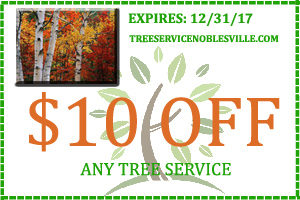In the summertime, tree leaves can fall victim to a variety of leaf illnesses and conditions. Insufficient watering, transplant shock, soil compaction, newly planted trees, moderate to severe drought, over-fertilization, and much more are all potential circumstances that can damage trees and their leaves. It can certainly be a mystery as to why the leaves on your trees are suddenly changing and falling off in the middle of the summer if you are new to gardening and tree care in general. Be sure to catch up on modern ways to care for your trees and plants without putting them at risk for leaf diseases and more. Continue reading to learn some facts about common conditions, influences, and scenarios that cause tree leaf discoloration, wilting, and more.
Leaf Scorch
In the case of leaves turning brown, curling up, and falling off, leaf scorch may be the likely culprit. The obvious signs of leaf scorch are yellow and brown-like color changes on the tips and ends of tree leaves. These leaves will eventually curl up, wilt, and drop off. This disorder is also referred to as Leaf Wilt and Leaf Burn. Nutrient deficiency, transplant shock, soil compaction, drought, and more are all common threats that cause leaf scorch and other similar tree problems.
Leaf scorch is a common condition that can occur if a plant or tree uses its water source faster than can absorb it from the ground soil. Plants and trees take in water through their fine feeder roots and transport it through their vascular system to the leaves. Leaf tissue that is farthest from these veins will suffer first from dehydration. These edges turn color and eventually curl up or fall off. This is the start of leaf burn. In drought-like periods, leaf scorch is much more likely to develop; due to the high temperatures and hot dry winds.
Also, certain types of trees are more susceptible to leaf scorch than other variety of trees; such as Red Oaks, Maples, and Flowering Dogwoods. These are trees with limited root systems, which make it harder to derive water from the soil below. As mentioned before, a tree can develop leaf burn if it is using water quicker than it can pull it from the ground; however, there are other possible situations that can also cause this leaf disorder.
Transplant Shock and Soil Problems
When a tree is moved or transferred to a new spot, it can go through a difficult adjustment phase known as transplant shock. This is another implication that can cause trees to lose their leaves in the summer time. Transplant shock occurs because the tree’s root system hasn’t has enough time to fully adjust to the difference in soil moisture, light conditions, amount of fertilizer, and other environs. It can take time for all these changes and acclimations to take place. Transplant shock can happen no matter how careful you transfer a new tree. It simply depends on nature and its surrounding elements.
Several root and soil problems can cause the leaves to fall as well. For example, if a plant or tree is watered excessively, the soil will become soggy. This prohibits the roots from getting any oxygen to grow newer, stronger roots. This will also eventually lead to leaf scorch. Root loss or inefficient root systems is another reason leaves can change color and deteriorate in the summer. Over-tilling and construction can cause roots to weaken; as well as, heat stress, dry winter and spring seasons, over-irrigation, excess fertilizing, and more.
Preventing and Curing Leaf Scorch
Browning leaf edges and wilting leaves is a sure sign of leaf scorch or atrophy. Unfortunately, once leaf scorch has developed, there is no cure. The damaged leaves will die and drop off; however, with proper tree care and water management, the tree’s leaves can recover and reproduce once again. When it comes to preventing leaf scorch, you must keep up with your seasonal tree care; especially winter watering. It is suggested to provide a deep soak, once a month, when there is no snow on the ground. This winter watering will prevent roots from atrophying from dehydration. This practice is helpful so long as you implement the soak on a day that is above freezing temperatures and early enough in the day so that the water does not freeze in the night chill.
Suggestions for Proper Tree Care and Guidance
A professional tree removal and maintenance company can answer any questions you have about residential tree care. They retain industry knowledge, as well as, all proper tools and equipment to facilitate any tree care job. It is important to consult a tree care professional before attempting any types of treatment, trim, or removal project. Tree care can be a dangerous task if you are not careful and trained in the process.
It is highly recommended to consult a tree professional for advice and information on how to treat tree diseases and more for residential and commercial properties. As a homeowner, taking responsibility for your trees and landscaping is a wonderful feeling and adds a warming sense of accomplishment and pride. It is understandable that dying or diseased trees can cause you a great deal of stress! Be sure to ask peers, neighbors, and of course, tree professionals, for advice and tips for better tree care for your property.






